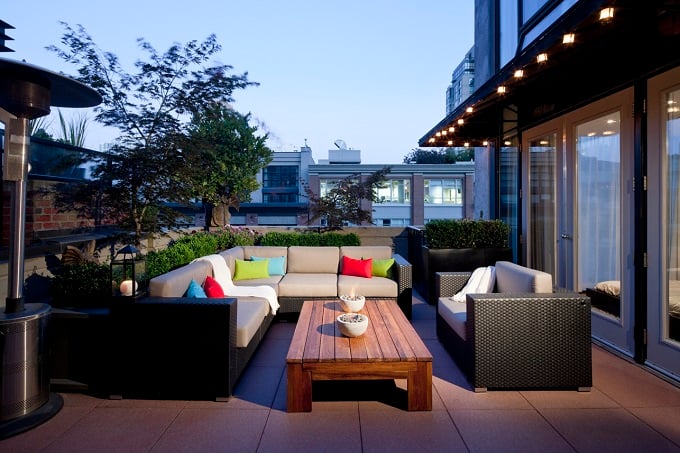
Outdoor furniture comes in different materials like wood, wicker, aluminium, and wrought iron. While setting up outdoor living spaces, it is necessary to choose the right type of furniture that suits your lawn, garden, or patio. It doesn’t stop with choosing the right style and material; you must install it properly and in the right place, a task best suited to professionals. You must also clean your furniture regularly to make sure that it last through the seasons. It is important that you know how to clean and prep your lawn and patio furniture. Listed below are the common types of materials used in the furniture and tips on how best to keep them clean.
Wicker Furniture
Cleaning wicker furniture can be tricky because dirt can accumulate on the delicate crevices of the weaves. Wipe spills immediately and vacuum or use a small brush on the furniture regularly to remove dust. If it is soiled, use a soft bristle brush and mild soap to wipe it off. Then, rinse it with a low-pressure hose and let it dry completely before sitting, because moisture and pressure from use can cause the furniture to sag. To remove mold or mildew, use a bleach solution to wash it thoroughly.
Wicker Weather Care:
Outdoor wicker furniture must be maintained every season to make it last through the years. Too much heat can make the weave brittle, while too much moisture can cause mold growth. During winter, store the items indoors or use patio covers to protect them from snow or rain. Some furniture is water resistant but if yours is not, coat the pieces with a sealant if you plan to leave them outdoors for a prolonged period of time.
Wooden Furniture
Wooden furniture is relatively expensive (teak, for example) and needs extra care to keep it in good condition all year long. Clean them every two weeks by spraying wood cleaner and scrubbing the surface with a soft brush. Moisture is to wood what rust is to iron so make sure you always keep your wooden furniture dry. Dampness will cause the wood to develop mildew. After washing it or in case of wet spills, wipe the furniture dry with cloth.
Wood Weather Care:
Weathering is common in wooden furniture. Patina development is a process, rather than a defect, when the furniture is exposed to sunlight and rain. Apply wood oil and let it sit for several hours before you gently wipe the surface with a clean rag. Oil conditions the wood, restores the original color, and provides added protection. During winter, deep clean the furniture before storing indoors, or invest in quality outdoor furniture covers.
Aluminum Furniture
Aluminum furniture is durable, versatile and does not need much care because it does not rust like iron. However, it is necessary to maintain them to extend their life. Wash with a low-pressure hose to remove any accumulated dirt or debris. Avoid high pressure as it could damage the finishing. Spray a mixture of mild soap and lukewarm water onto the furniture and wipe it off with a clean cloth. Gentle and repeated wiping helps remove the scuffs caused by other metal objects. Avoid using abrasive cleaners or other chemicals.
Aluminum Weather Care:
This type is preferred for its low maintenance and ability to withstand extreme weather conditions like sun, rain, sleet, and snow. You can leave the pieces outdoors without worrying about damage. They’re safe to store in colder seasons after simply cleaning and drying them thoroughly. To protect from ultraviolet exposure, corrosion, and pitting, coat the furniture with automobile wax or baby oil once a year.
Wrought Iron Furniture
Wrought iron furniture gives a sturdy look to your garden or patio. Clean regularly using a rag dipped in a mixture of mild soap and water. Hose it if there are intense stains, but make sure to dry it completely to avoid rusting. If the paint is wearing away, repaint it using a spray-on painter or a brush.
Wrought Iron Weather Care:
Rusting can be a serious problem with wrought iron so it’s necessary to take preventative measures after purchasing. Exposure to rain, acids in bird droppings, and wearing away of paint are some of the ways rust develops. If the damage is mild, sand it off by choosing the right type of sandpaper for your furniture. In case of severe damage, it is better to get rid of the furniture.
Cleaning Furniture Cushions
Outdoor cushions are designed to resist sun damage, stains, mildew, and moisture. Even if they are soiled or stained, scrub the cushions using a sponge dipped in a mild liquid detergent. Rinse it with a garden hose and let it dry. Removable, vinyl cushion covers are mostly machine washable, so you can use a mild bleach-free detergent to wash them. Regularly brush off dust and be sure to wipe spills with a wet cloth immediately.
Soft Material Weather Care:
Large patio umbrellas can be used over outdoor furniture to avoid exposure to direct sunlight for extended periods of time. This helps minimize the fading of the cushion fabrics over time. Before storing the cushions indoor for winter, wash thoroughly and dry them to remove any moisture. Wrapping plastic around cushions does not protect them but rather traps moisture, promoting mildew growth.
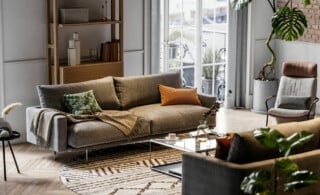 How to Regularly Clean Your Upholstery, From Random Spills to Pet Hair
How to Regularly Clean Your Upholstery, From Random Spills to Pet Hair 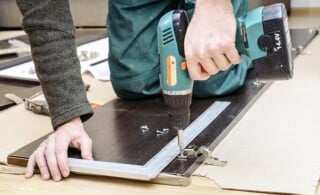 How Much Does Furniture Assembly Cost?
How Much Does Furniture Assembly Cost? 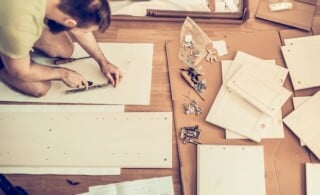 10 Tips for Assembling Flat Pack Furniture
10 Tips for Assembling Flat Pack Furniture  5 Things You Didn’t Know You Could Hire Personal Helpers For
5 Things You Didn’t Know You Could Hire Personal Helpers For 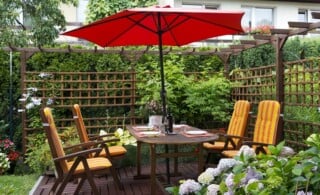 Outdoor Equipment & Furniture Installation – Assembly Service Costs
Outdoor Equipment & Furniture Installation – Assembly Service Costs 

Awesome tips on outdoor furniture cleaning. There’s definitely a big difference in the products and procedure for house cleaning and outdoor/patio and furniture cleaning.